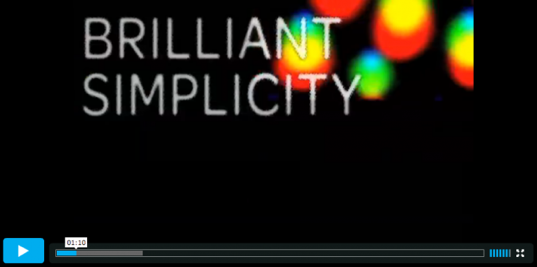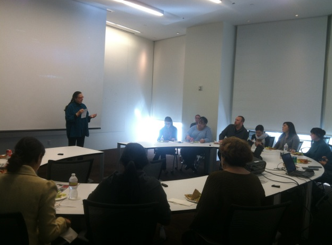By Kristi Sprinkel
On December 3, HMC’s LA studio hosted Metropolis magazine editor-in-chief Susan Szenasy for Brilliant Simplicity, a film based on the work of winners and runners-up in Metropolis’ Next Generation Design Competition. The competition asks designers, ten years or less in practice, for workable ideas that will make our world sustainable, accessible, technologically-savvy, and historically relevant. The film, Brilliant Simplicity, places a strong emphasis on research, collaboration, and innovation–which are all critical topics of today.

Susan Szenasy has traveled to more than 35 cities and 150 architecture firms, design organizations, and industry organizations delivering the Metropolis tour with the goal of being a conversation starter within firms. According to Susan, “the film delivers an overview of what so many innovative designers are doing to have a positive impact on the world while maintaining a commitment to achieving excellence in design. It’s proof that good design and sustainability can effectively coexist on all scales. It emphasizes the necessity for research and an ever-widening collaboration that, in the most fortuitous circumstances, can lead to innovation. And today, that word, innovation, has become our culture’s mantra.”
The film highlights a multi-disciplinary approach to discovery and the Next Generation Design Competition participants draw from other disciplines that may not typically be discussed when thinking about architecture and design. For example, as natural collaborators the participants brought in partners from outside of design like nanotechnologists and engineers to help bring ideas to next level. This idea was conveyed throughout the film. The film also focused on going back to the basics with pure and simple ideas.
After showing the film, Susan led a thought-provoking discussion on what we are doing as a firm and as individuals to develop a culture of experimentation and innovation. She stressed the importance to discover “breakthrough ideas that can shift us into a new way of thinking.” She challenged us to learn from what we are doing and look for ways that we can elevate that level of innovation in a large practice, and to do it in ways that make sense within the context of our projects. Susan also stressed that we need to think about research in an efficient manner. There is a lot of duplicate research occurring and collectively the industry needs to consider open source initiatives and determine what information is relevant and worthy to share with others.
 Susan left us with a few final thoughts–everybody has a role to play and we need to continually look at what fosters innovation. Ask “what if” questions, seek-out cross-sector collaborations, and engage the next generations.
Susan left us with a few final thoughts–everybody has a role to play and we need to continually look at what fosters innovation. Ask “what if” questions, seek-out cross-sector collaborations, and engage the next generations.
